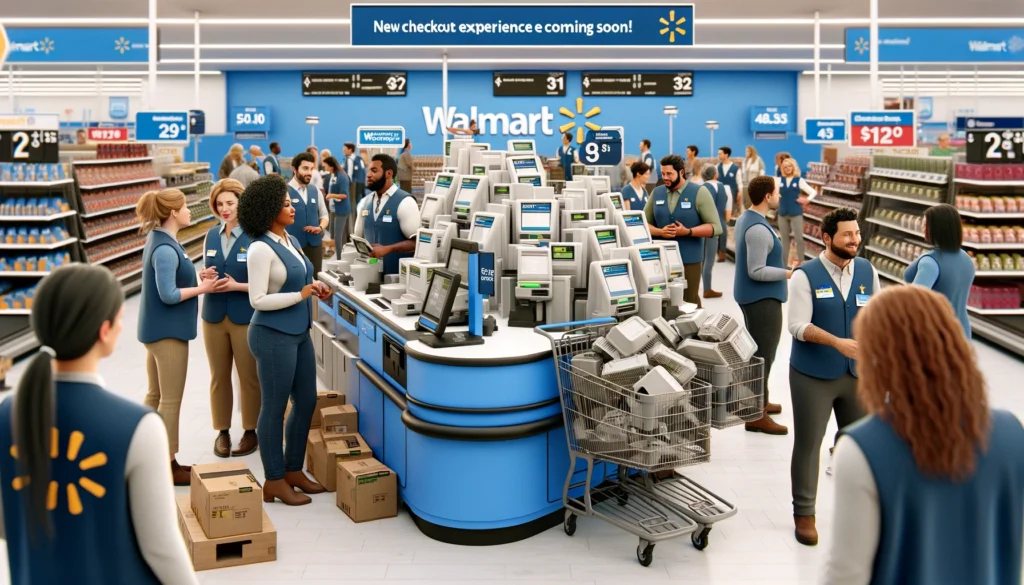In a surprising move that raises questions about the future of retail automation, Walmart has decided to remove self-checkout machines from two stores in Cleveland, Ohio, and Shrewsbury, Missouri, due to concerns over increased crime and customer dissatisfaction. The decision, which directly challenges the touted benefits of these machines, was met with a mix of skepticism and support from industry experts and underscores the vulnerabilities of these systems.
Retail giant Walmart has typically been at the forefront of implementing innovative technologies to streamline the shopping experience. However, this latest move appears to be a significant backtrack as they re-evaluate the effectiveness of automated getaways. The company’s decision to replace machines with staffed lanes at the two locations is being framed as an opportunity to “give our associates the chance to provide more personalized and efficient service,” according to a spokesperson for Walmart.
However, underlying this move is a troubling reality – the rising rates of theft at self-checkout machines. Neil Saunders, managing director of GlobalData, revealed that “theft rates at self-checkouts are reasonably high both because of deliberate actions and accidental mistakes.” Retailers are now paying close attention to this development and reconsidering the value of automation over human intervention.
In addition to increased crime rates, customer dissatisfaction with the self-checkout experience has been a significant factor in Walmart’s decision. A study conducted by Drexel University revealed that these systems left shoppers irritated as they had to navigate the process solo. Walmart is not alone in grappling with this issue; rival retailers Dollar General and Target are also reassessing their use of self-checkout machines. Dollar General has removed the lanes from 300 stores, while Target limits the number of items customers can process through these machines.
Yet, at the heart of this issue lies a pivotal question – are we pushing automation too far, too quickly? In the race towards a fully automated retail experience, it appears that we may have underestimated the importance of human interactions and the inherent value in the connection between customers and associates. Is it possible that these automated tasks are no match for the nuanced judgment and understanding that human employees bring to the table?
As Walmart takes a bold step back from widespread automation, it forces the retail industry as a whole to reconsider the balance between human input and technological advancement. This decision may prompt other retailers to pause and assess their own reliance on self-checkout machines, serving as a potentially significant turning point in the retail landscape.
In conclusion, Walmart’s decision to remove self-checkout machines from two of its stores sends a clear message to the retail industry: technology might not be the ultimate answer to every problem. While automation has undoubtedly improved efficiency in some aspects, it seems that it has also inadvertently exposed retailers to increased crime rates and customer dissatisfaction. This realization will likely drive more retail giants to reevaluate their deployment of such technologies and recommit to finding the right balance between human touch and automation for the ultimate benefit of customers, associates, and the company as a whole.



